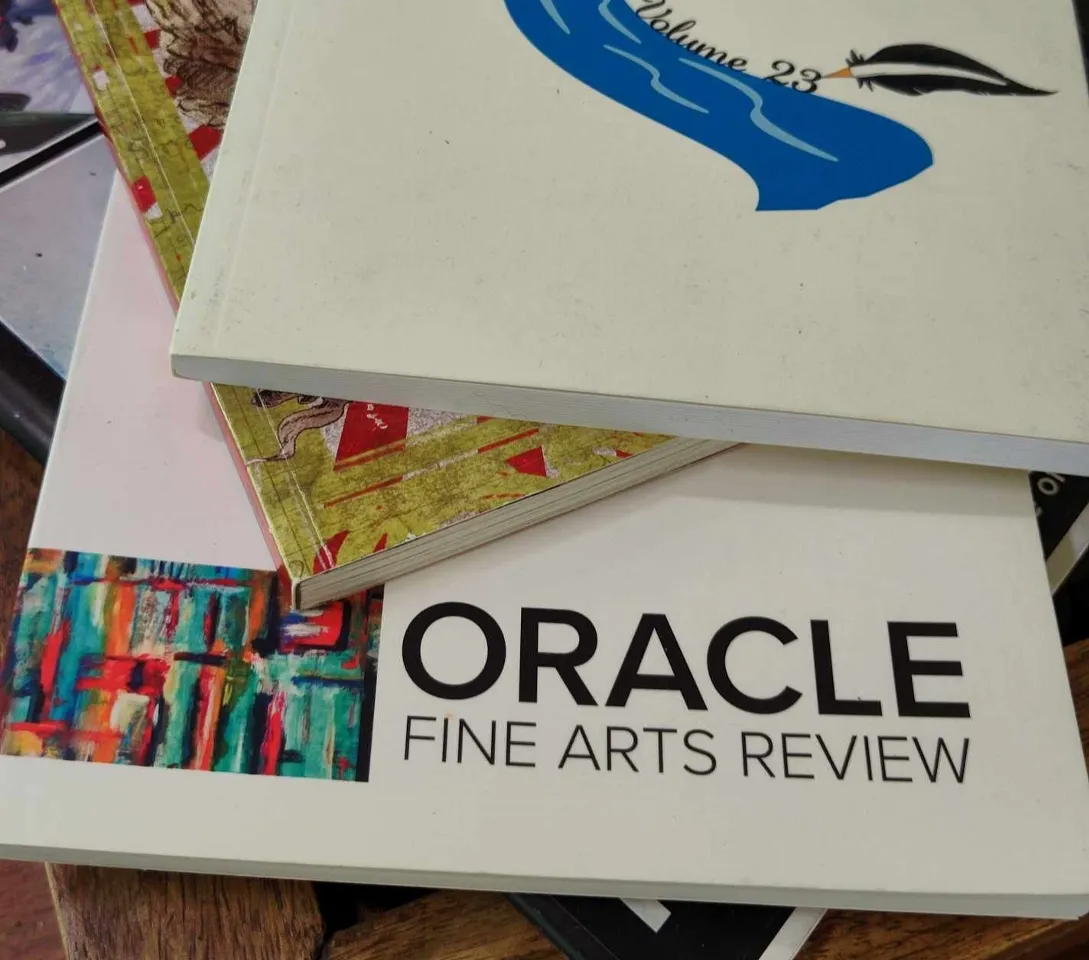How to Publish a Short Story: The Traditional Way
Sage Kay
Writer, reader, outfit repeater.
Publishing a short story is not like publishing a novel. There are no $ queries$ or $ literary agents$ involved, nor is there as much of an official process. The lack of direction in this process can make things difficult for beginner writers looking to get their name out there, but never fear, your favorite blog poster is here. Allow me to take you through the world of traditional publishing for short stories.

Is it worth publishing a short story?
Getting a short story of yours published is a great, low-stakes way to kick-start your writing career. There are plenty of free options, and earning a publication here and there is a solid method of self-validation and proof to future publications that your work is, well, publishable. While publishing short stories isn’t required for your career as a writer, it’s certainly one of the more accessible entries.
One way to ensure that publishing your short stories is worth it for you in the long run is to read the fine print of your contract. Unless you’re willing to allow your story to become someone else’s property entirely, you’ll want to make sure that the rights to the story revert to the author (you) after a short amount of time (usually one to six months after publication). This way, should you want to publish $ your own collection of short stories$ or use your piece for any other purpose, you can still include these pieces in your other endeavors down the road.
Just remember, nearly all publishers want first publication rights to the stories they’re publishing, so keep this in mind while sending your story out for publication and before posting any of your content on a personal blog or website.
Where to submit your short stories for publication
Submitting short stories for publication is as easy as ever, as almost all literary magazines accept online submissions. This means a quick google search of "online short story submission" will yield a ton of results for places you can submit to. But I would never ask you to do extra work after promising to provide you answers, so here are ten literary magazines that accept online submissions:
$ 1. Smokelong Quarterly$
Publishes flash fiction; open call for submissions; for new authors only.
$ 2. Write City Magazine$
Publishes fiction, nonfiction, and poetry; for both new and established authors; paid.
$ 3. Typishly$
Publishes short fiction; for both new and established authors; fast turnaround.
$ 4. One Story$
Publishes short fiction; for both new and established authors; paid.
$ 5. Every Day Fiction$
Publishes flash fiction; for both new and established authors; fast turnaround.
$ 6. Suburbia Journal$
Publishes short fiction; for both new and established authors; accepts a wide range of genres.
$ 7. The Master’s Review$
Publishes fiction and nonfiction; for new authors only; paid.
$ 8. Flash Fiction Magazine$
Publishes flash fiction; for both new and established authors; paid.
$ 9. CRAFT Literary$
Publishes flash and short fiction; for new writers only; paid.
$ 10. Halfway Down the Stairs$
Publishes fiction and poetry; for new writers only; themed.
Those are ten good options to get you started on your submission journey!

Does it cost money to publish short stories?
Publishing short stories online is simple and accessible, but it is not always free. Reading fees for literary magazines and journals can range from $1 - $20, though $3 is typical. Publications that charge reading fees usually (and should!) pay their contributors for publishing rights.
Luckily, there are plenty of online literary magazines that accept free submissions, and some still pay contributors, too.
I suggest sticking to the free submissions until you get your sea legs.
How to know if your story is ready for publication
Unfortunately, there’s no way to tell with 100% certainty when your piece is ready for publication. Here are a few steps you can take to get it as close to that 100% as possible.
Clear your piece of any grammar/spelling mistakes
Grammar or spelling mistakes in your prose are often enough for an editor to reject your piece right out the gate. Ideally, your stellar story and captivating characters would convince them to push through the mistakes, but let’s not take that chance. Run your piece through $ Grammarly $ or a Grammarly-adjacent friend to make sure your chosen literary magazines don’t write off your submission before giving it a real chance.
$ NovelPad$ includes a $ ProWritingAid $ integration, so toggle that on in Settings when you're reading for a grammar check!
Don’t rush the drafting process
Even short stories need time to simmer. Especially if you’ve been working at the same piece for a while, you may become blind to the flaws in your story. Once you’ve written a first draft, push it to the side and focus on something else for a bit. Then, revisit it with fresh eyes.
Get some feedback from a reader
Sometimes even the freshest of eyes don’t trump the bias that our own perception shows to our writing. Whether we like it or not, writers often keep unneeded dialogue, descriptions, or entire plot points because it’s too close to our hearts and we just can’t bring ourselves to cut it. That’s okay, though, just grab your most honest friend and let them read your piece. This is a great way to get unbiased feedback from someone who is likely a part of your audience. Think of them as an alpha reader!
Listen to criticism
So, let’s say you submitted your short story to several literary magazines and none of them are biting. This is perfectly fine—you should expect a lot of rejections when sending shorts out for publication. But a long series of rejections can also indicate that your story is not ready. After a handful of rejections, go through your story again and see any improvements that can be made. Patch up plot holes, make that character less annoying, whatever you think is stopping the magazines from accepting your piece. It’ll find its home eventually, but don’t be afraid to edit more after starting submissions.
Really great publishers might give you personalized feedback with the rejection. This is a good sign! If they're taking the time to give you pointers, that means your story was almost there.

The process of publishing a short story is a bit less predictable than publishing a novel, but you can consider this article your official rundown of the process. Now all there is to do is write your story and start submitting!
P.S. If you're not happy with the traditional publishing process, or you just can't find a publisher you vibe with, $ publishing short stories as collections$ can be an incredibly fulfilling and lucrative option!
Like what you're reading?
Join other authors like you in NovelPad’s free writing community!
Join the communitySimilar Posts
What File Formats are Accepted by Kindle Direct Publishing?
File types for ebooks, paperbacks, and hardbacks on Amazon's KDP.
Ollie Ander
Is probably just a couple cats in a trench-coat—the hair shedding and sunlight napping are highly suspect.
The Writer’s Resolution Guide 2024
Goal ideas and strategies for your new writing year.
Sage Kay
Writer, reader, outfit repeater.
Do Self-Published Authors Make More Money?
Royalty rates, merchandise sales, ad control, and other ways self-published authors stand to make more money.
Bella Rose Emmorey
book editor, rogue behaviorist, digital marketer, writer, brand builder, plant aunt, and cheese enthusiast.
When is the best time to publish a horror novel? [Peak Sales Method]
Make the most of your horror book launch by strategizing with these tips.
Bella Rose Emmorey
book editor, rogue behaviorist, digital marketer, writer, brand builder, plant aunt, and cheese enthusiast.
How long is a Science Fiction Book?
How many words, chapters, and pages should be in your sci-fi novel?
Ollie Ander
Is probably just a couple cats in a trench-coat—the hair shedding and sunlight napping are highly suspect.
How long is a fantasy book? Words, pages, chapters, scenes, & prologues
What should wordcount goals look like for a fantasy novel?
S.R. Beaston
Crafty with words, wit, and wisdom, just add caffeine to make it more interesting.